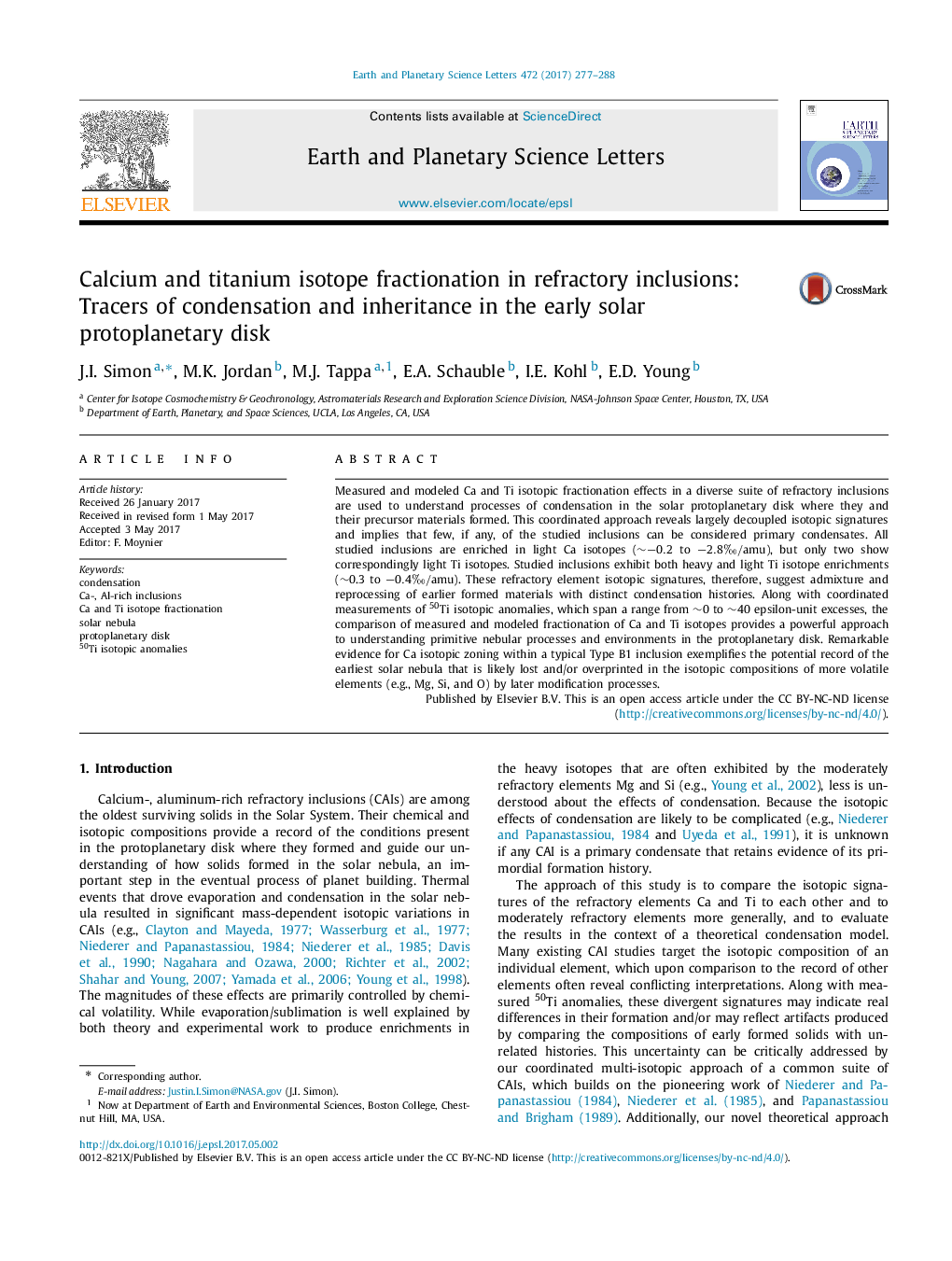| Article ID | Journal | Published Year | Pages | File Type |
|---|---|---|---|---|
| 5779518 | Earth and Planetary Science Letters | 2017 | 12 Pages |
Abstract
Measured and modeled Ca and Ti isotopic fractionation effects in a diverse suite of refractory inclusions are used to understand processes of condensation in the solar protoplanetary disk where they and their precursor materials formed. This coordinated approach reveals largely decoupled isotopic signatures and implies that few, if any, of the studied inclusions can be considered primary condensates. All studied inclusions are enriched in light Ca isotopes (â¼â0.2 to â2.8â°/amu), but only two show correspondingly light Ti isotopes. Studied inclusions exhibit both heavy and light Ti isotope enrichments (â¼0.3 to â0.4â°/amu). These refractory element isotopic signatures, therefore, suggest admixture and reprocessing of earlier formed materials with distinct condensation histories. Along with coordinated measurements of 50Ti isotopic anomalies, which span a range from â¼0 to â¼40 epsilon-unit excesses, the comparison of measured and modeled fractionation of Ca and Ti isotopes provides a powerful approach to understanding primitive nebular processes and environments in the protoplanetary disk. Remarkable evidence for Ca isotopic zoning within a typical Type B1 inclusion exemplifies the potential record of the earliest solar nebula that is likely lost and/or overprinted in the isotopic compositions of more volatile elements (e.g., Mg, Si, and O) by later modification processes.
Related Topics
Physical Sciences and Engineering
Earth and Planetary Sciences
Earth and Planetary Sciences (General)
Authors
J.I. Simon, M.K. Jordan, M.J. Tappa, E.A. Schauble, I.E. Kohl, E.D. Young,
